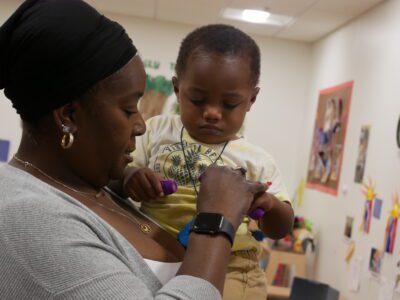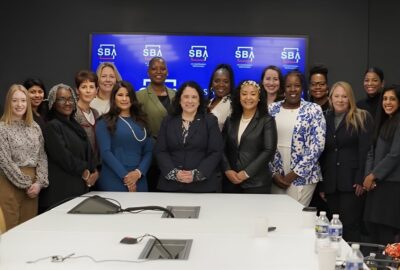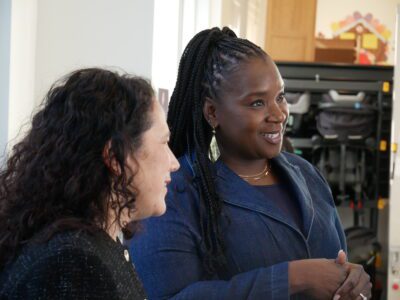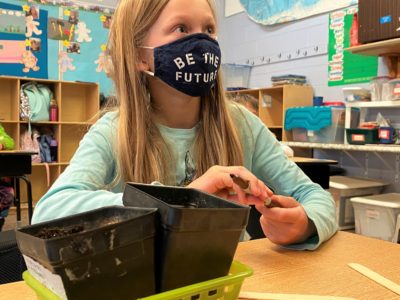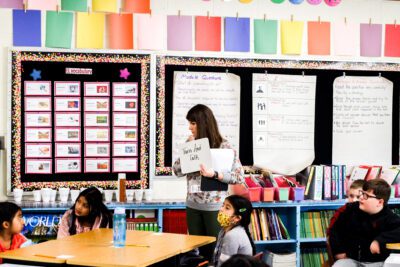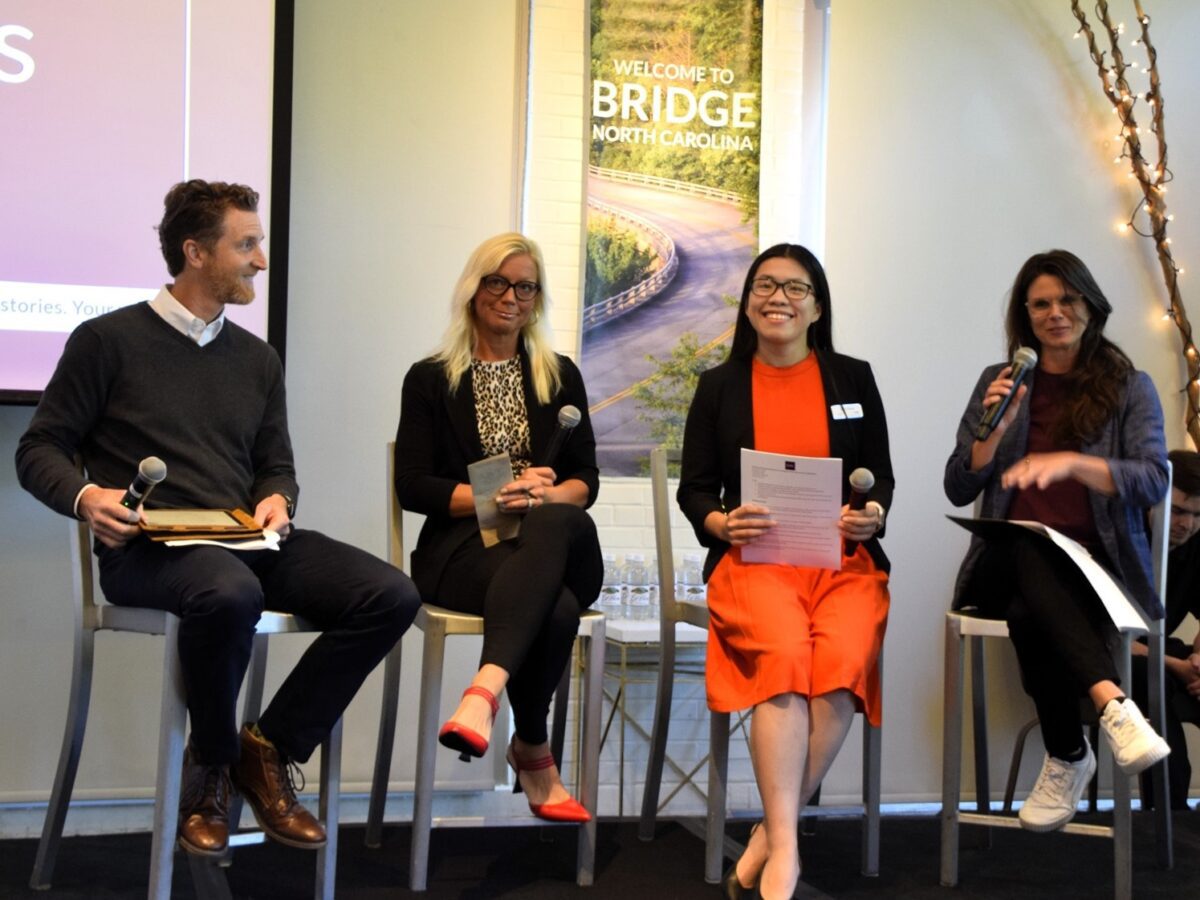
|
|
In June 2024, at a convening of our board, strategic council, team, and external stakeholders, EdNC held a conversation about “best practices” and what that term actually means to different people, including us.
This is the framework EdNC uses to think about the categories of best practices, which comes from a 2006 report funded in part by the MacArthur Foundation.
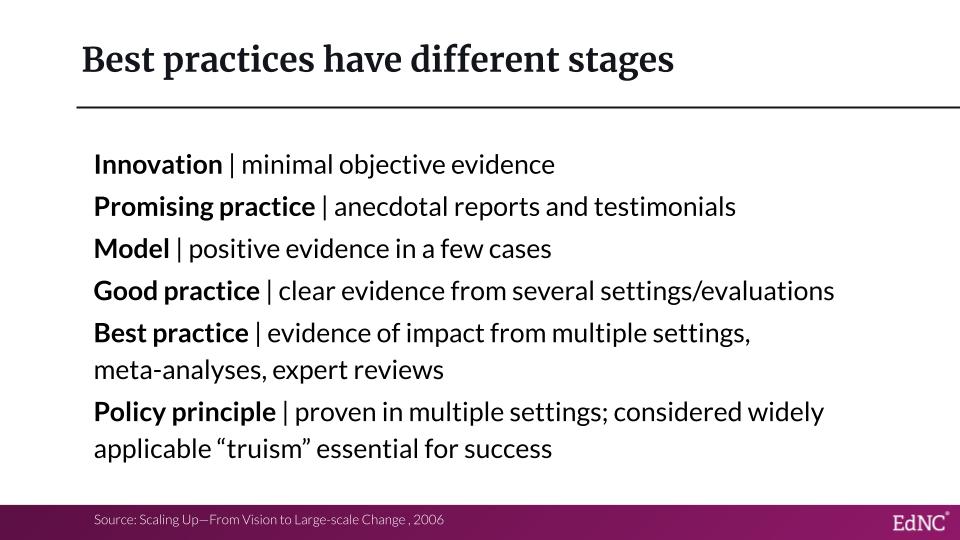
“This question is not new,” said Kelley O’Brien, who consults with EdNC and facilitated the conversation. “How to define, lift up and share, and then determine when to scale best practices.”
EdNC sees all of the categories of best practices in our travels across North Carolina. One recent example of scaling a policy principle is the implementation of the science of reading in elementary schools statewide.
Rupen Fofaria, a former reporter at EdNC before he started his current role as director of operations and policy for the N.C. State Board of Education, highlighted at the convening, “EdNC’s unique ability to distribute thoughts about what’s working in different places around the state.”
What counts as innovative?
Long before COVID-19, EdNC was interested in innovation. More specifically, we were interested in when innovation bubbles up from our classrooms and our schools versus when innovation is pushed into our classrooms and our schools by a district or the state.
Singapore, seen as a leader worldwide in education, does both. Some schools serve as laboratories of innovation, and then once the country has identified and is ready to scale a best practice, it is pushed into all of the classrooms in all of the schools across all of the country in one fell swoop.
COVID-19 disrupted the status quo, and schools and community colleges had to innovate new ways of doing things from supporting students to providing instruction.
We saw a wide range of reactions to the idea that the pandemic could be a disruptive event that would spur innovation and radically reshape the student experience of education going forward.
Unlike Singapore and some other states, North Carolina doesn’t have an infrastructure for innovation. The state doesn’t have a comprehensive way to identify, assess, share, and then scale best practices.
Given that, here are some of the ways the categories of best practices show up in EdNC’s work.
Lifting up the people behind innovations
Meet Kate Goodwin, founder of Kate’s Korner Learning Center
Kate Goodwin is the early childhood educator and leader who founded Kate’s Korner Learning Center in Durham.
Her “empowerment model” focuses on what educators need to be the best they can possibly be and includes providing fair wages, insurance, free child care for their own children, and attending to the social and emotional needs of the educators themselves.
By focusing on healing, the educators are better able to see their own humanity, dignity, and worth, and thus are better able to fully attend to the students in their care, reducing reliance on biases that can lead to exclusionary practices.
Kate’s Korner functions in part as a lab school for Goodwin’s nonprofit, Truth Education Foundation.
“Truth Education Foundation’s mission is to expand the research base in early childhood education, as well as develop innovative tools to provide culturally responsive training & coaching services for early childhood professionals that positively impact the educational and social-emotional outcomes for children from infancy through third grade.”
Goodwin’s goal is to close the gap between the work of early childhood researchers and practitioners.
Katie Dukes met Goodwin in the course of her research on early childhood providers across North Carolina.
Both Liz Bell and Dukes see themselves as part of the early childhood community with a role to play rather than as detached observers. Bell says that’s been a much more authentic, accurate, and powerful approach.
Meet Quarry Williams, a school leader in Edgecombe County
At EdNC’s convening, Fofaria introduced Quarry Williams, saying, “This gentleman is himself a best practice. He’s a relationship builder. He’s an incredible leader.”

When we first got to know Williams, he was the coordinator of the Honor Opportunity Purpose Excellence (HOPE) alternative learning program in Edgecombe County Public Schools. Now, he is the principal at Phillips Middle School.
At HOPE and with the support of then-Superintendent Dr. Valerie Bridges, Williams worked with the Rural Opportunity Institute to find a way to bill Medicaid for student mental health services and convinced the district to earmark reimbursements for his health and wellness program to create a social worker position.
Williams said in addition to removing the stigma of mental health services for students and parents, access created the opportunity for a “complete 180” for students.
“That’s the power of having someone on your campus that can impact your students,” he said.
After Fofaria reported on this innovative practice, other districts replicated iterations of the approach.
In July 2024, the N.C. Department of Health and Human Services announced a $2.5 million grant from the Centers for Medicare & Medicaid Services to expand school-based health care in North Carolina, according to a press release.
The grant will “ensure school-aged children and their families have equitable access to health care and behavioral health services readily available in the same places where they learn and grow.”
Meet Dr. Angie Mullennix, who built a promising practices clearinghouse at DPI
Dr. Angie Mullennix and I met during the pandemic as we visited schools along with David Stegall that had been highlighted by the Canopy Project. Mullennix developed a research protocol for documenting promising practices in the schools, and DPI went on to build this promising practices clearinghouse.
“The mission of the promising practices website is to promote practices that motivate, engage, and provide measurable results in North Carolina’s Public School Units. The Promising Practices Clearinghouse will support teachers, administrators, district personnel and any other education advocates seeking strategies that have been proven successful.”
— DPI’s website
Educators can use DPI’s clearinghouse to identify and replicate promising practices, nominate a practice for inclusion, and build virtual professional learning networks.
Mullennix notes that often people in schools don’t think of what they are doing as a promising practice, so she asks them, “How did you solve this problem, is it working, and can you tell me how it is working?”
Meet Gina Zhang, a researcher with myFutureNC
One best practice that has been codified into policy and law by the state of North Carolina is for the state to have an attainment goal, said Gina Zhang at the EdNC convening.
In pursuit of the attainment goal, “myFutureNC really embodies innovation in action,” said Zhang. “We are really seeing firsthand how the state is coming together working towards this ambitious goal.”
The Aspen Institute has cited the work of myFutureNC among best practices in cross-partisan advocacy by being responsive to local context.
In 2021, myFutureNC in partnership with ncIMPACT launched local education attainment collaboratives “to find innovative solutions that increase educational attainment.”
Meet Dr. Zach Barricklow, who is spearheading the Rural Postsecondary Practices Partnership
“We are constantly looking for what’s working across the community college system,” says Dr. Zach Barricklow, the associate vice president for strategy and rural innovation at the North Carolina Community College System.
Because collaborative partnerships are so critical for community colleges in rural areas, Barricklow has brought together leaders at the system office, EdNC, myFutureNC, and the Belk Center for Community College Leadership and Research to form the new Rural Postsecondary Practices Partnership — known as RP3.
The categories of best practices according to RP3 are aligned with the ones presented above, but the terminology is a bit different.
According to Barricklow , RP3 is and will be looking for emerging practices, which are novel solutions to persistent problems; established practices, which have moved from concept into being operationalized and are showing early signs of success; and enduring practices, which have shown consistent impact over time with movement from innovation to effectiveness to efficiency to expansion as they become woven into institutional culture and resources.
So what is a case study and where does it fit in?
As we travel the state covering North Carolina’s early childhood sector, K-12 schools, and community colleges, EdNC lifts up innovative and promising practices we see so others can evaluate whether it would work in their local context. We know that what works in one place might not work for a whole lot of reasons in another place.
Last year, Emily Thomas wrote our first in-depth case study on Davidson-Davie Community College’s registered nursing apprenticeship program. Thomas spent more than three months with the Davidson-Davie Community College team to understand the work that was necessary to launch the state’s first registered nursing apprenticeship program for adults. She dug in on the obstacles they overcame, the partners they brought to the table, and the practical results of the work, all with the goal of writing a case study that could be used to replicate this program at another community college.
Thomas is currently working on a second case study looking at the partnership between Craven Community College and the CarolinaEast Health System to be published this fall.
How stakeholders see the challenges and opportunities in innovation, replication, and scalability
Chelsea Waite with the Christensen Institute who studies student-centered learning shares a simple conviction: “Innovation is possible in any school in America.”
She said part of the problem when it comes to innovation in classrooms and schools is that “What you know depends very much on whom you know.”
When we asked those at the EdNC convening how best practices get identified in their work, they mentioned a wide variety of ways they bubble up, but more importantly, they noted that all of the ways require a connection.
Many also noted that often there is one strong, innovative leader behind the best practice, and thus leadership transitions present a challenge to sustainability.
Some noted that sharing a best practice requires vulnerability because if it doesn’t work in the place or places where it gets replicated there can be unanticipated relational costs.
Who gets to decide what is innovative is a tension point between researchers and those doing the work out in the field, they said, noting that striving to hit some elusive definition of innovation keeps people from communicating publicly about strategies that are “good enough” to share.
Instead of “quick and shiny” fixes, our stakeholders are more interested in how to amplify “mundane” best practices.
Our stakeholders also noted that being replicable is different from being scalable. The 2006 report includes a lot of information about how to assess scalability.
Please continue to share your innovations, promising practices, and best practices with us. If they are “good enough” for you, they are good enough for us. Email me at mrash at ednc.org, and as always, thank you for your leadership in the continuous improvement of education across North Carolina.



